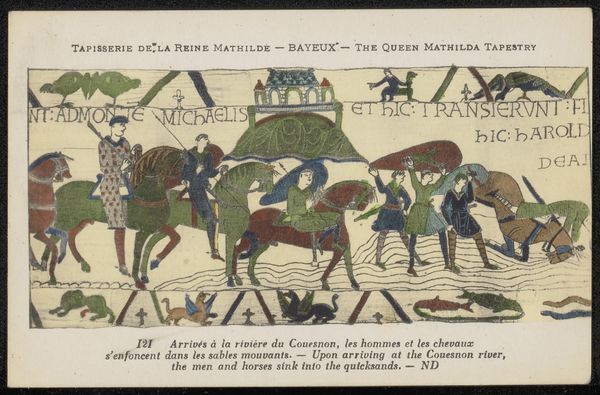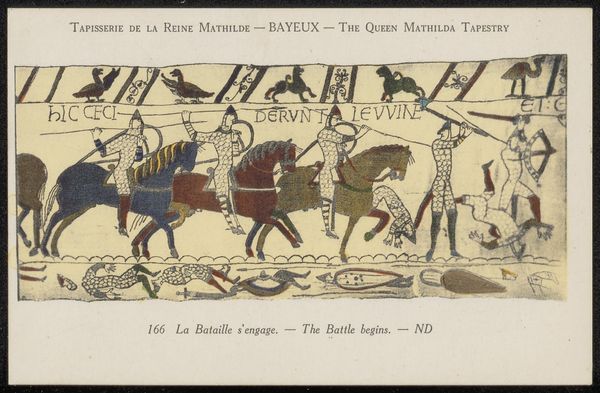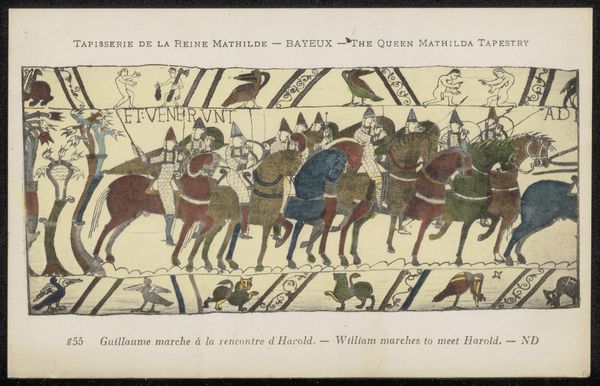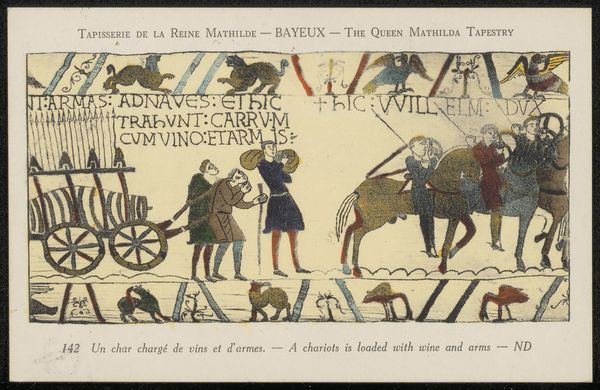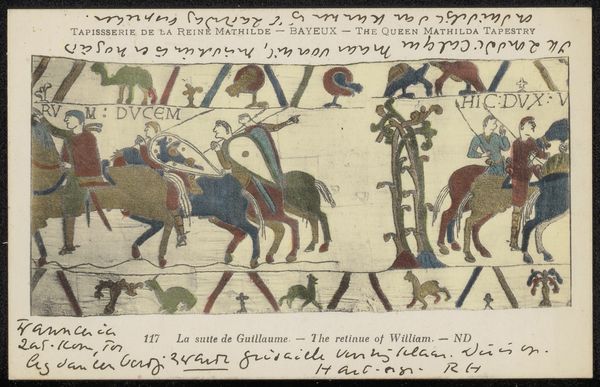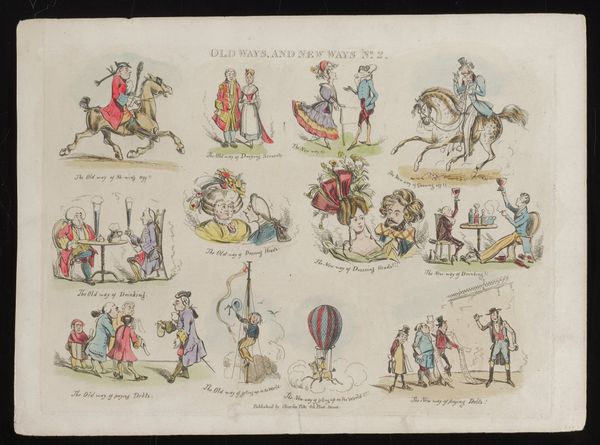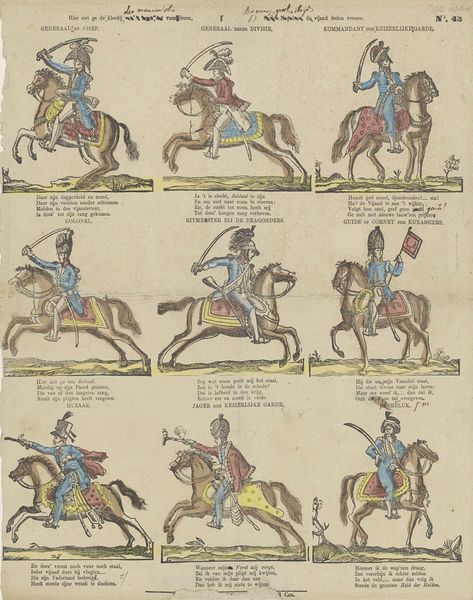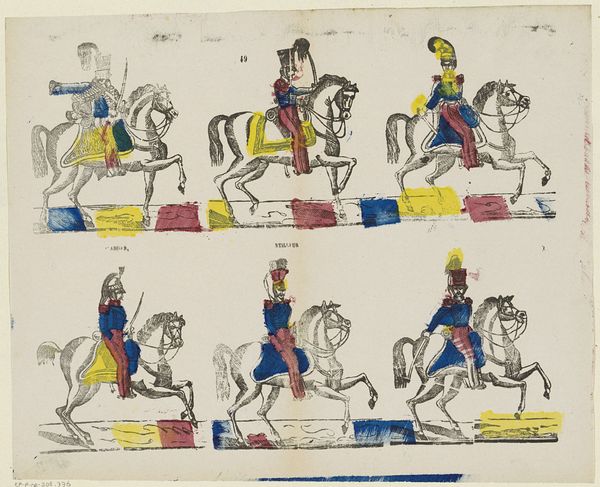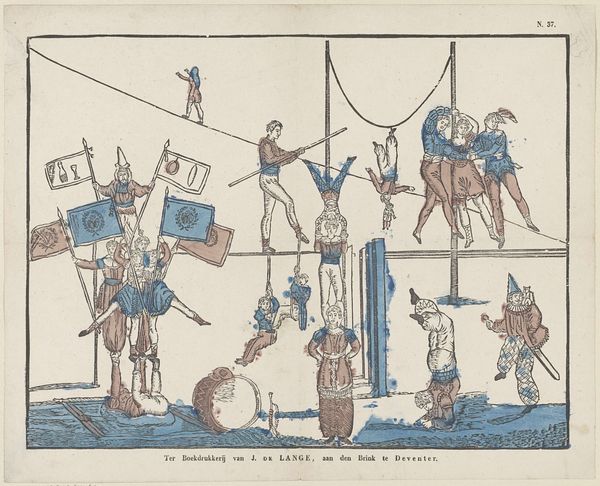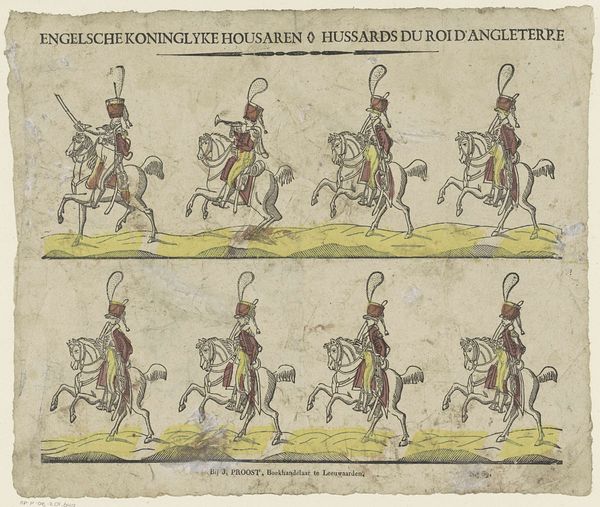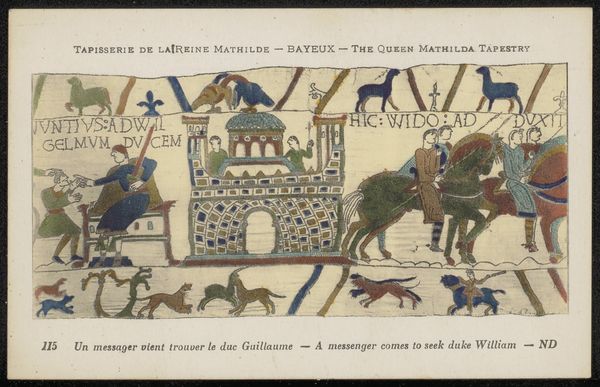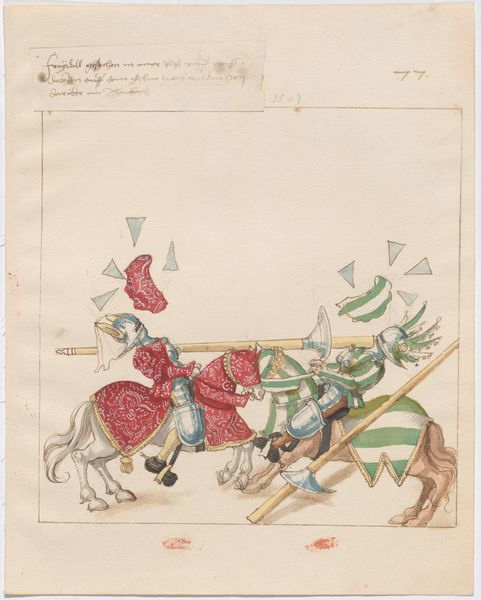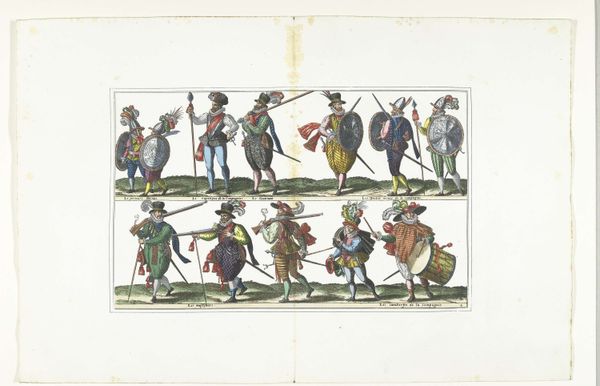
Prentbriefkaart aan Willem Bogtman Possibly 1930 - 1939
0:00
0:00
print, textile
#
medieval
#
narrative-art
#
ink painting
# print
#
textile
#
figuration
#
linocut print
#
pen work
#
history-painting
Copyright: Rijks Museum: Open Domain
Curator: This piece, attributed to Richard Nicolaüs Roland Holst and tentatively dated between 1930 and 1939, is titled "Prentbriefkaart aan Willem Bogtman." It's a print that appears to mimic a section of the Bayeux Tapestry. Editor: My initial impression is a sense of controlled chaos. The figures are densely packed, yet the palette is surprisingly muted, creating a subdued feeling for what is supposed to be a scene of battle. Curator: Indeed. Formally, the artist employs a fascinating combination of linearity and pattern. Notice how the repetition of the horse and rider motif creates a rhythmic effect. Also, consider the relationship between figure and ground; the lack of depth flattens the image, emphasizing its surface quality. Editor: From an activist's lens, I find the work fascinating for what it omits as much as what it depicts. It presents a romanticized, almost sanitized view of medieval warfare, focusing solely on the European participants and excising all the brutality inherent in colonization and conquest. It's important to ask, for what purpose was Roland Holst resurrecting this particular historical narrative during the interwar period? What audiences was it intended to reach? Curator: An astute point. While Roland Holst draws on this visual language inspired by the Bayeux Tapestry to construct meaning, the formal choices amplify the message through semiotic interplay. For example, the archers are carefully situated below and subservient to the knights. The figures are deliberately stylized, reduced to their basic forms, which underscores the medieval influence. The colors and use of materials also point to craft and care in this commemorative piece. Editor: I agree. By emulating a craft-based form, the artist potentially romanticizes this past, imbuing it with a sense of nostalgia for a social order built upon rigid hierarchy, potentially mirroring some contemporary views in that moment in time. What could this image say about ideas of power in the Netherlands at the beginning of World War II? Curator: That offers a rich area to explore regarding context. This analysis helps bring depth to interpreting this captivating artwork. Editor: I feel much more engaged in unpacking its narrative potential and recognizing Roland Holst's intent, the artwork's power dynamics, and its continuing relevancy to modern audiences.
Comments
No comments
Be the first to comment and join the conversation on the ultimate creative platform.
